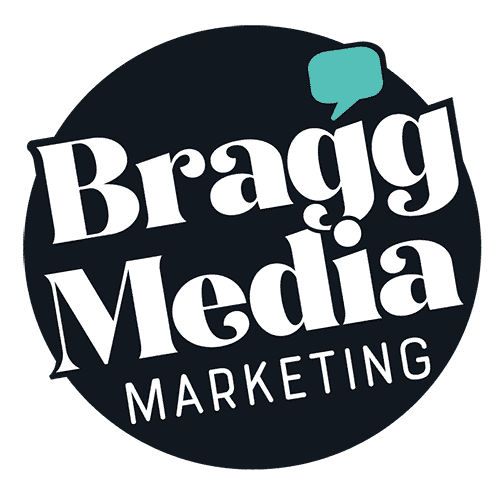When it comes to long-term success, marketing plays a key role. Marketing’s sole purpose is to attract a steady flow of clients who bring revenue to your business.
The right marketing strategies work in conjunction with sales, customer service and even accounting. Marketing can lift administrative burden (and costs), attract new customers, delight current customers and support business growth.
The most important part of a marketing plan includes strategies that aim to increase efficiency and revenue. Here are 12 ways to develop the right marketing strategies for your business.
Know your audience
Long before you develop marketing strategies or even business goals, read the room! You have to know who your ideal customers are — because they are who your marketing plan will be structured around. This includes the typical marketing demographics: age, gender identity, industry, income and location. However, consider which social media outlets your audience might use, what their hobbies and interests might be, what they might consider friction in the sales or customer service process.
An effective long-term marketing plan is focused on attracting and retaining the most profitable or valuable customer base for your business. Based on this plan, you can design your marketing strategies to play off of one another to achieve your marketing objectives.
Understand your customer’s buyer journey
Often called the sales funnel, the typical buyer’s journey goes something like this:
- Awareness: Your customer has a problem and is starting to research how to define or understand that problem
- Consideration: Your customer has clearly understood and defined their problem. They are researching how to solve their problem.
- Decision: The customer has found a solution to their problem. They are making a list of businesses that can solve this problem, and researching to eliminate businesses from that list.
When you understand how your customer makes a buying decision and ultimately chooses your business, your marketing strategies can offer value at each stage. This could include a how-to blog on identifying their problem, an e-mail with information on your services and a discount to get them started.
Develop short-term marketing goals
When it comes to creating marketing strategies, the overall focus should be on hitting short-term goals. These are actionable steps over 12 months or less that serve as building blocks to prepare you for new phases in your marketing plan. Short-term goals should be big enough to see immediate results, but small enough so you can make changes as needed. Examples include website traffic, conversions, engagements and social media followers.
Know your marketing structure
How a bakery markets their business will look a lot different than a landscape architectural firm. A landscape architectural firm might spend a lot of time responding to municipal Request For Proposals. A bakery, on the other hand, might advertise their sweet treats in the local newspaper.
Understanding how your business operates and your industry trends will allow your marketing structure to take shape. Marketing structure includes the organization, the planning, the channels, communication — whatever your business needs to secure a sale. This could include:
- Strategy & Planning
- Lead management
- Marketing operations
- Product promotions
- Demand generation
- Strategic alliances
- Customer loyalty
- Branding
- Digital
- Social
- Content
Determine your Unique Selling Proposition
The Unique Selling Proposition (USP) is a statement that differentiates you from your competition. This could be a specific product or quality service plan that is the main source of revenue. The USP is how your marketing strategies should be developed. Some questions to ask yourself:
- How is my business different from the competition
- What do our customers like best about my business?
- Why am I in business?
- What problem does my business solve?
Locate the source of your biggest clientele base
It’s one thing to know who your customer is and how they decide on your business. It’s another thing entirely to know where your customers are. This refers to the physical location of your client base. Knowing the location allows you to target your marketing campaigns.
If you are a small town bakery, then you already know your clients are in the small town. Narrow down to specific neighborhoods, schools, other businesses they frequent. If you are an e-commerce business, then the world is your oyster. Take a close look at your website traffic. Where are a majority of the sales coming from? Where is a majority of the website traffic coming from?
 Website Design
Website Design
Affordable website design with a process that works for you.
Get to know your competition
A marketing plan’s competitive analysis gives insight on who your main competitors in your niche are — name, location, website, social media, pricing structure, reputation and marketing campaigns. This is an inside look at what strategies your competitors use to stay ahead. Then, you can take inspiration from their ideas and do them better.
Use a CRM tool
While marketing plans can be implemented by guessing and checking, they can be implemented much more effectively if your business uses tools along the way. A Customer Relationship Management (CRM) tool gives your business the ability to manage and sustain information on new or current clients. Some CRMs are simple databases of contact information while others allow you to keep notes on meetings, track e-mails and organize contacts into specific lists.
Never underestimate a good follow-up
It’s amazing how much time, effort and money businesses spend on getting money from their customers. But none of this effort is spent on maintaining that relationship. A follow-up e-mail or simple phone call can go a long way to helping your customers refer you to their friends.
Follow-up strategies serve the purpose of creating a stamp of approval from the client to your business. They also help boost other factors such as customer service and business recognition which are essential to improve your marketing strategies.
Diversify your marketing strategies
Your local bakery’s newspaper ad worked for 20 years until everything went digital. When new bakeries started popping up, the local bakery’s daily customers dwindled. Suddenly, that newspaper ad is costing them money instead of making them money. This is why having more than one strategy in your marketing plan has a higher chance of success. Think in terms of holistic marketing — using digital and traditional methods.
Track your marketing performance
Marketing shouldn’t be spaghetti testing — throwing ideas at the wall and hoping they stick. Keep a spreadsheet of your marketing efforts and track the data. How many news customers did you receive from that ad? How many people liked, shared or commented on your social media post? How often does your website generate leads? Regularly outlining or tracking the performance of your strategies will give you real-time feedback on your strategies to make any necessary adjustments.
Be patient
Perhaps the most important tip in developing solid marketing strategies is to be patient. Don’t abandon marketing strategies too quickly if they aren’t performing up to your expectations. This might take away from your most successful marketing achievement you’ve ever had. As an overall rule, wait until your marketing strategies have at least one hundred clicks of data to decide to determine whether or not to move on.



